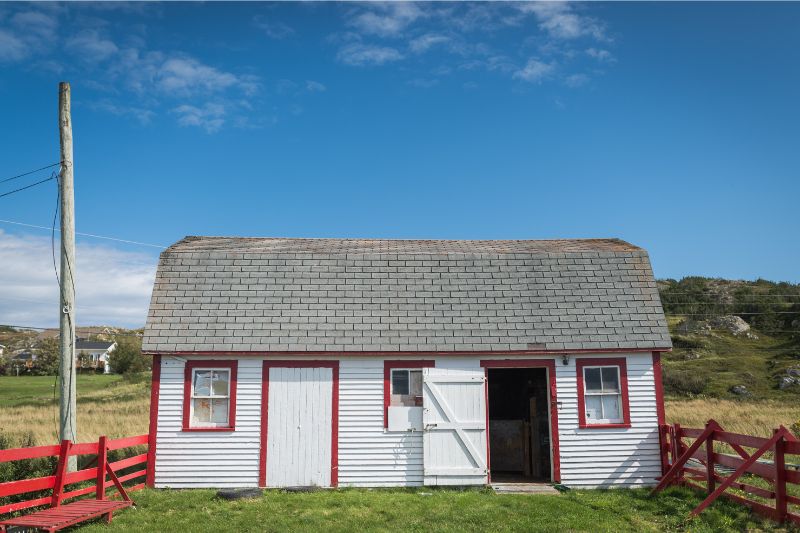The Durability of Pole Barns: Why They Are Built to Last

Pole barns, also known as post-frame buildings, have been used for decades as an economical solution for various construction needs. The design of pole barns relies on vertical poles to support the roof and walls, as opposed to traditional stick framing. This type of construction provides several advantages, including increased durability and longevity. In the text below, we’ll explore the durability of pole barns and why they are built to last.
The materials used
The strength of the materials used is the first reason why pole barns are built to last. Treated wood or steel poles, which are known for their durability, are used as the primary support structure. These poles are embedded into the ground and set in concrete footings, providing a solid foundation that can withstand high winds and heavy snow loads. Additionally, the use of horizontal trusses provides additional support for the roof and walls, ensuring that the weight of the structure is evenly distributed. The use of strong and durable materials in the construction of pole barns helps to ensure their longevity, making them a practical and reliable option for a variety of construction needs.
Weight is distributed evenly across the structure
Another important factor that contributes to the durability of pole barns is their design, which is intended to distribute weight evenly across the structure. Horizontal trusses that run perpendicular to the poles provide additional support for the roof and walls, ensuring that the weight of the structure is distributed evenly. This helps to prevent any one part of the structure from becoming overloaded and failing, which could lead to significant damage. This is why two-story pole buildings might be a great solution for those who need a bit more space, as the weight distribution and overall design make them more than safe to handle. The even distribution of weight is especially important in areas with extreme weather conditions, as it helps the structure withstand high winds and heavy snow loads. This makes it even better, as two-story pole buildings have more storage capacity and can meet the needs of industries such as farming and agriculture while being safe no matter the weather.
The simplicity of design
Unlike traditional stick-framed buildings, which rely on complex framing systems, pole barns have a simple design that is easy to construct and maintain. This simply means that there are fewer components that can fail over time, leading to less maintenance and repair work. Additionally, the simple design means that there are fewer opportunities for water to infiltrate the structure, which can lead to rot and other types of damage.
Adaptability
Pole barns are highly adaptable structures that can be easily modified to suit changing needs. This is particularly useful in agricultural and industrial settings where businesses may need to adjust their operations over time. For example, a pole barn originally used for storage can be easily converted into a workspace or living area with minimal modifications. Pole barns are also easily expandable, allowing businesses to add to the existing structure as needed. This adaptability means that pole buildings can be used for many years, even as the needs of the business evolve. Overall, the ability to modify and adapt pole barns makes them a versatile and cost-effective option for a variety of construction needs.
Cost-effective structures, providing a high return on investment
Their simple design means that they can be constructed quickly and at a lower cost than traditional stick-framed buildings. Additionally, pole barns require less maintenance and repair work over time due to the durable materials used in their construction. This reduces the overall cost of ownership, making them a practical and cost-effective option for construction projects. Furthermore, their adaptability and expandability provide businesses with the ability to adjust their operations without having to build entirely new structures, reducing long-term costs. Overall, the cost-effectiveness of pole barns makes them an attractive option for a variety of construction needs, offering long-lasting durability and practicality at a reasonable cost.
Resistance to fire and pests
Treated wood or steel poles are less likely to catch fire than traditional stick-framed buildings, providing added safety and protection against fire hazards. Additionally, the use of metal roofing and siding further enhance the fire resistance of pole barns. Furthermore, pole barns are less susceptible to termite and rodent damage compared to stick-framed buildings due to the absence of wall cavities. This reduces the risk of structural damage over time, further contributing to the durability of pole buildings. Overall, the resistance to fire and pests is another reason why pole barns are built to last, providing long-lasting protection and reliability for a variety of construction needs.
In short, pole barns are built to last due to the strength of the materials used, the even distribution of weight across the structure, the simplicity of the design, their adaptability, and their cost-effectiveness. These factors make pole barns an attractive option for a wide range of construction needs, from agricultural and industrial settings to residential and commercial applications. As such, pole barns are likely to continue to be a popular choice for construction projects for many years to come.











Leave a Reply